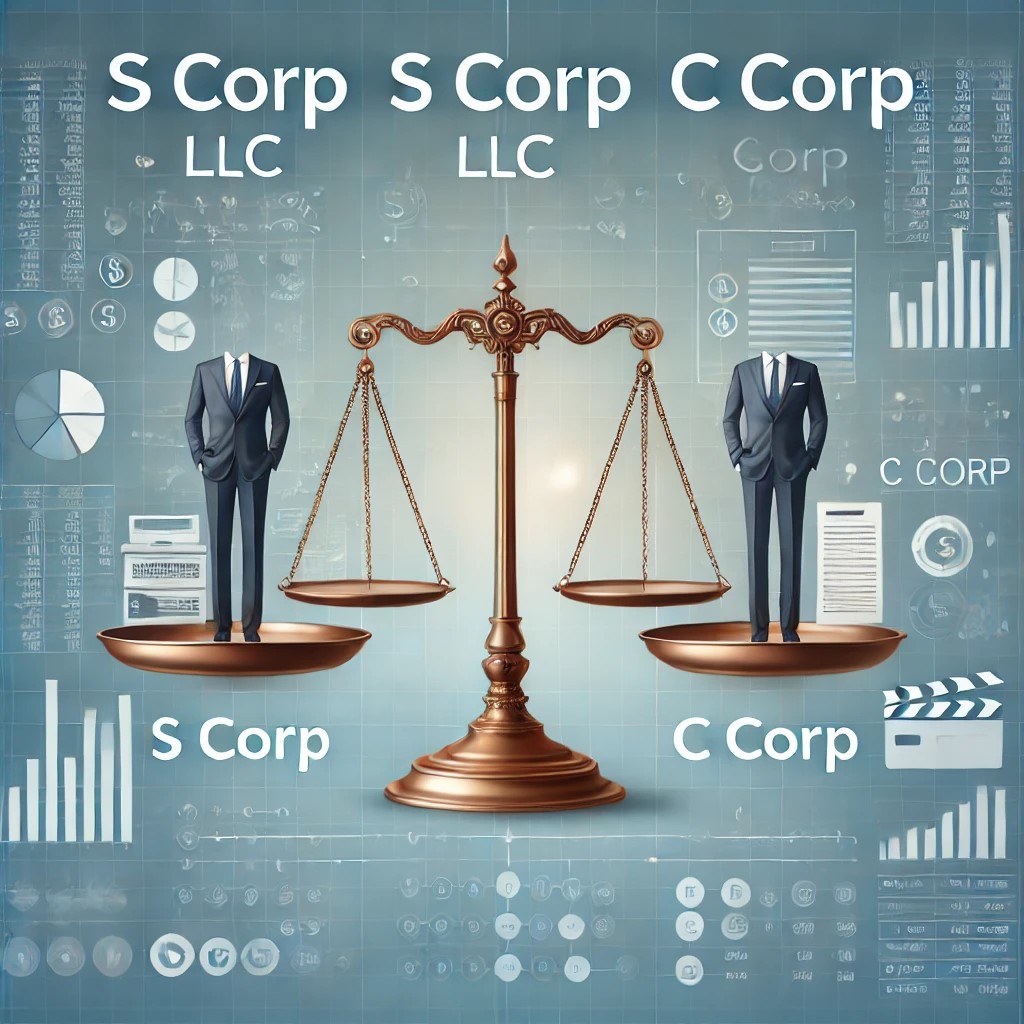

S Corporation, LLC, and C Corporation: A Comprehensive Guide
When starting a business in the USA, choosing the right business structure is crucial. The decision can impact your taxes, liability, and overall operations. This guide will provide a comprehensive comparison between S Corporations (S Corp), Limited Liability Companies (LLC), and C Corporations (C Corp). Tam Accounting, a leader in accounting services, aims to clarify these business structures to help you make an informed decision.
What is an S Corporation?
An S Corporation (S Corp) is a type of corporation that meets specific Internal Revenue Code requirements. The main benefit of an S Corp is its tax structure, which allows income, losses, deductions, and credits to pass through to shareholders' personal tax returns, avoiding double taxation.
Key Features of an S Corporation:
- Limited liability protection
- Pass-through taxation
- Restrictions on the number of shareholders (up to 100)
- Shareholders must be U.S. citizens or residents
- One class of stock
What is a Limited Liability Company (LLC)?
A Limited Liability Company (LLC) is a flexible business structure that provides the liability protection of a corporation with the tax benefits of a partnership. LLCs can choose how they want to be taxed – as a sole proprietorship, partnership, S Corp, or C Corp.
Key Features of an LLC:
- Limited liability protection
- Flexible tax options
- No restrictions on the number of members
- Members can be individuals, corporations, or foreign entities
- Less formalities and paperwork compared to corporations
What is a C Corporation?
A C Corporation (C Corp) is a legal entity that is separate from its owners. C Corps are subject to corporate income tax, and profits are taxed at both the corporate level and again at the shareholder level when distributed as dividends.
Key Features of a C Corporation:
- Limited liability protection
- Ability to issue multiple classes of stock
- No restrictions on the number of shareholders
- Suitable for businesses planning to go public or seek venture capital
- Double taxation (corporate and personal level)
S Corporation vs. LLC: Key Differences
1. Formation and Structure:
- S Corp: Requires filing Articles of Incorporation with the state, adopting bylaws, issuing stock, and holding regular board meetings.
- LLC: Requires filing Articles of Organization with the state, creating an operating agreement, and maintaining less stringent formalities.
2. Taxation:
- S Corp: Pass-through taxation; profits and losses are reported on shareholders' personal tax returns.
- LLC: Flexible taxation; can be taxed as a sole proprietorship, partnership, S Corp, or C Corp.
3. Ownership:
- S Corp: Limited to 100 shareholders, all of whom must be U.S. citizens or residents.
- LLC: No restrictions on the number or type of members.
S Corporation vs. C Corporation: Key Differences
1. Taxation:
- S Corp: Pass-through taxation; avoids double taxation.
- C Corp: Subject to double taxation; profits are taxed at the corporate level and again when distributed as dividends.
2. Shareholder Restrictions:
- S Corp: Limited to 100 shareholders.
- C Corp: No restrictions on the number of shareholders.
3. Stock Classes:
- S Corp: Only one class of stock.
- C Corp: Can issue multiple classes of stock.
How to Form an S Corporation
1. Starting an S Corp:
- Choose a business name.
- File Articles of Incorporation with the state.
- Create corporate bylaws.
- Issue stock to shareholders.
- Obtain necessary licenses and permits.
- Apply for an Employer Identification Number (EIN).
2. Electing S Corp Status:
- File Form 2553 with the IRS to elect S Corp status.
- Ensure all shareholders sign the form.
- Submit the form by the IRS deadline (generally by March 15 of the tax year you want the election to take effect).
How to Form an LLC
1. Starting an LLC:
- Choose a business name.
- File Articles of Organization with the state.
- Create an operating agreement.
- Obtain necessary licenses and permits.
- Apply for an EIN.
2. Electing to be Taxed as an S Corp:
- File Form 2553 with the IRS to elect S Corp taxation for your LLC.
- Ensure all members sign the form.
- Submit the form by the IRS deadline.
Taxes on an LLC
1. How LLCs Are Taxed:
- Default Tax Classification: Single-member LLCs are taxed as sole proprietorships; multi-member LLCs are taxed as partnerships.
- Electing S Corp or C Corp Taxation: LLCs can choose to be taxed as an S Corp or C Corp by filing the appropriate forms with the IRS.
2. Paying Taxes for an LLC:
- Members report their share of profits and losses on their personal tax returns.
- Self-employment taxes apply to members' share of income.
Conclusion
Choosing the right business structure is critical for your business's success and compliance with tax laws. Whether you opt for an S Corporation, LLC, or C Corporation, understanding the differences, benefits, and requirements will help you make an informed decision.
How Tam Accounting Can Help
Tam Accounting specializes in providing expert guidance and comprehensive accounting services to help you navigate the complexities of forming and managing an S Corporation, LLC, or C Corporation. Our team of experienced professionals is dedicated to ensuring your business complies with all legal and tax requirements while maximizing your financial benefits.
Contact Tam Accounting today for a free consultation and let us help you choose the best business structure for your needs.






